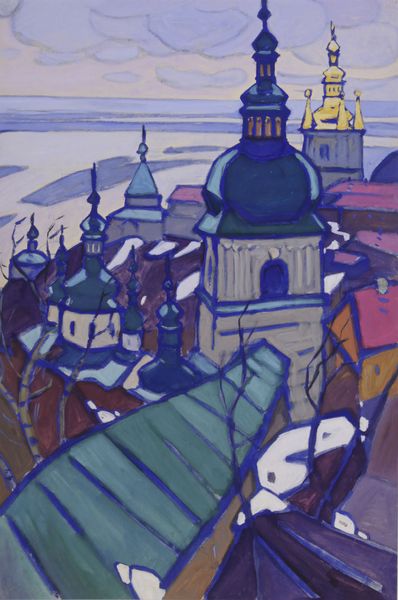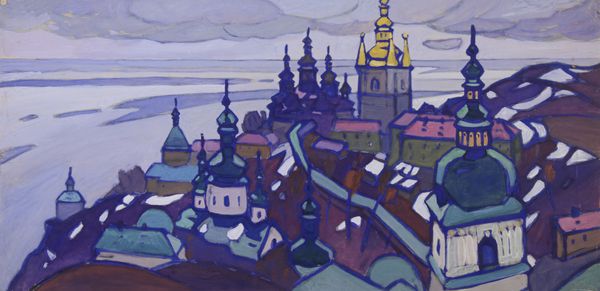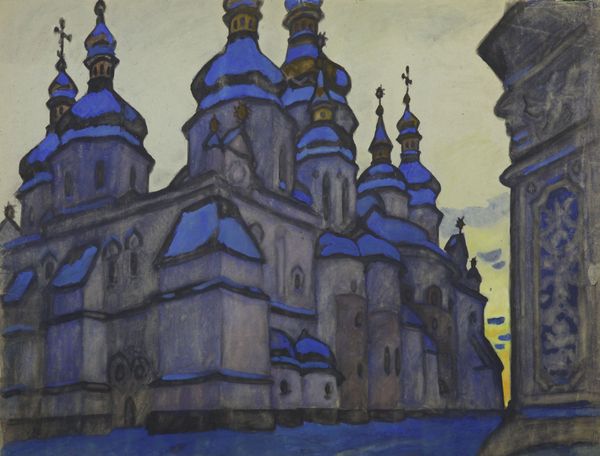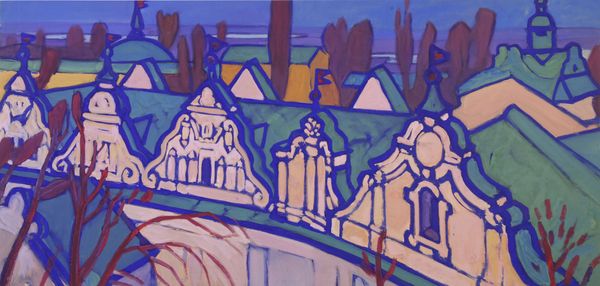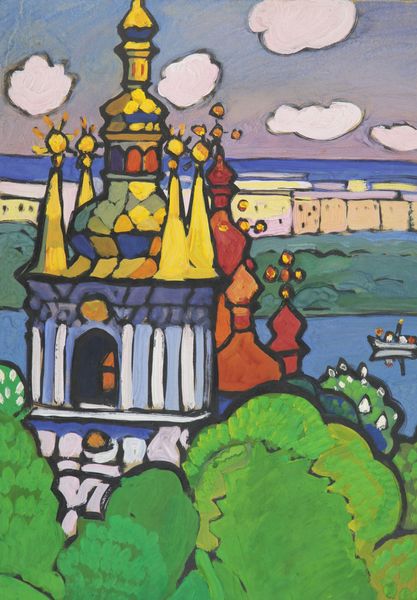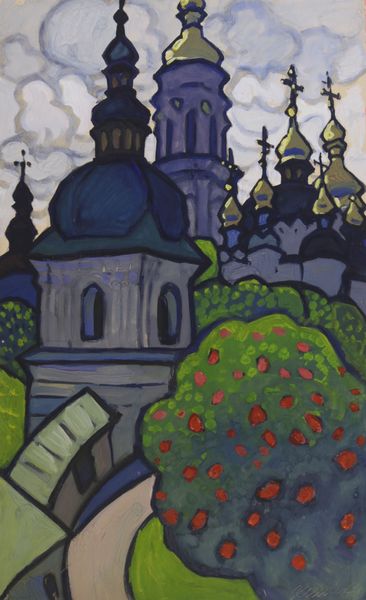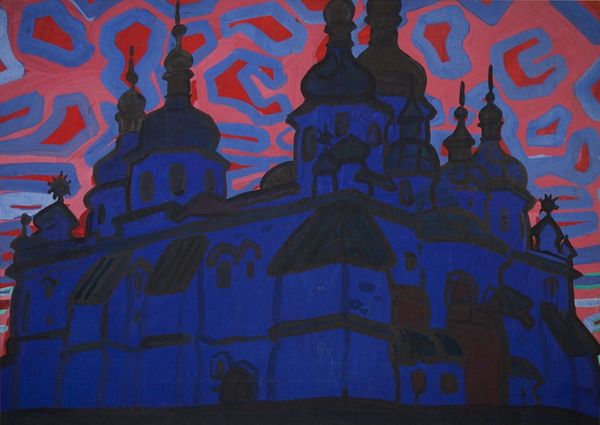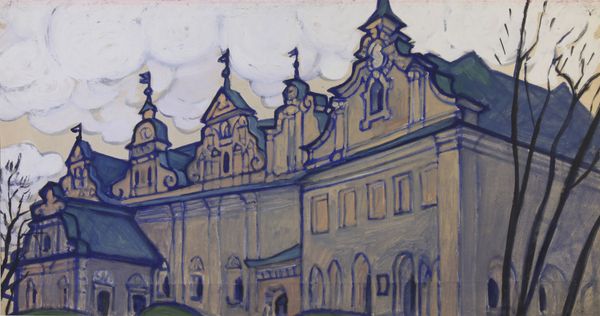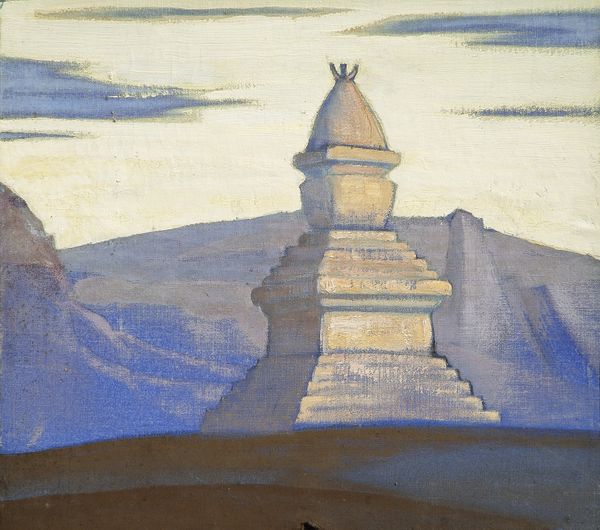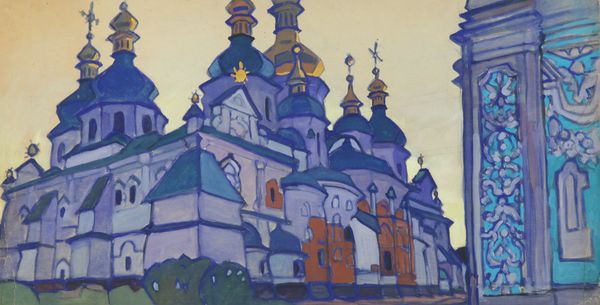
tempera, painting
#
sky
#
tempera
#
painting
#
landscape
#
cityscape
#
modernism
Dimensions: 50 x 99 cm
Copyright: Yuriy Khymych,Fair Use
Curator: This is Yuriy Khymych's 1975 painting, "The Dnieper overflowed (Kyiv-Pechersk Lavra)," rendered in tempera. What are your first thoughts? Editor: There's such a potent, almost melancholic stillness in it. The dominance of cool blues and greys really sets a somber mood, while the singular warm tone makes me look toward that steeple and think of hope. Curator: It's interesting you say that, because the very *making* of this artwork involved considerable hope and defiance. Khymych was working in a Soviet context, where religious subjects were highly regulated, yet here he focuses on one of the most important Orthodox Christian sites. How does the materiality speak to that? Editor: Knowing it's tempera, it connects with the very long tradition of icon painting in the region, right? So even the medium quietly resists the secularism being enforced at the time. Beyond that, the near-monochromatic palette minimizes detail—which I read as a commentary on obscured truths and the suppressed history of Ukraine. How do these formal choices speak to a cultural context? Curator: The use of such restricted color highlights something else: access. High-quality pigments weren't always readily available. It seems that, perhaps by necessity, he focuses instead on compositional form and texture, using visible brushstrokes to build up this almost dreamlike vision of the Lavra. The heavy lines evoke traditional mosaic, perhaps alluding to the rich and layered material history of Kyiv. Editor: It also hits me on a more symbolic level. Water, as depicted here overflowing the Dnieper, is a very common visual tool, representing purification but also chaos. The title points toward that. Do you think Khymych intended this scene of religious refuge, towering over an unruly nature, as some kind of statement? Perhaps as an idea that these traditions cannot be washed away? Curator: That resonates profoundly with the realities of 1970s Ukraine. I think he leverages these themes—of survival, resistance, hope, memory, and materiality—to create not just a city scape, but a kind of testament. Editor: Agreed. What began as a visual experience for me now leads into broader narratives. The use of a very traditional form to capture what must have felt at the time like revolutionary spirit. Curator: Exactly, so by carefully selecting accessible materials and referencing Ukrainian aesthetic histories, Khymych subtly created a powerful commentary. It is remarkable that it has such an immediate effect today.
Comments
No comments
Be the first to comment and join the conversation on the ultimate creative platform.
